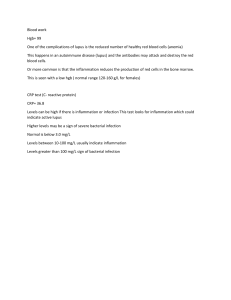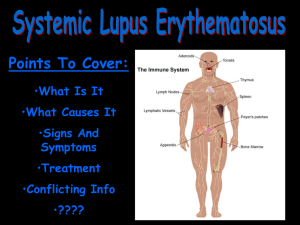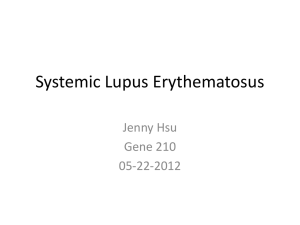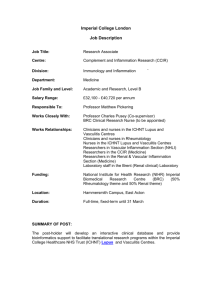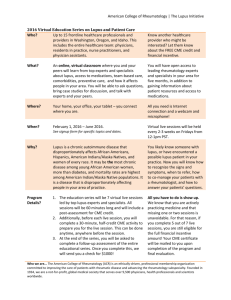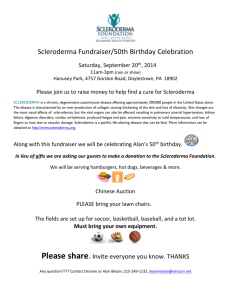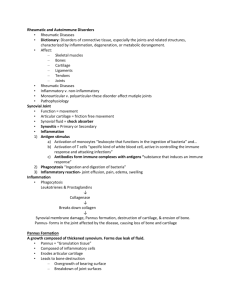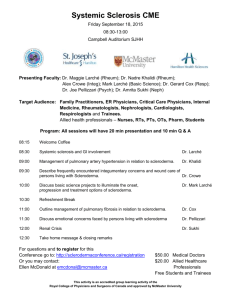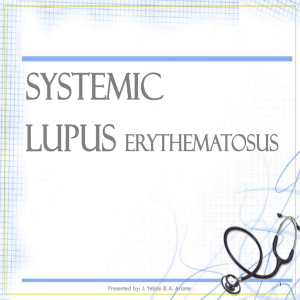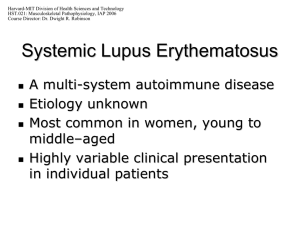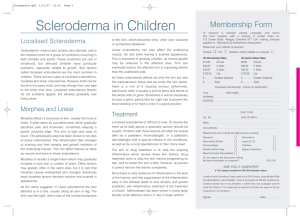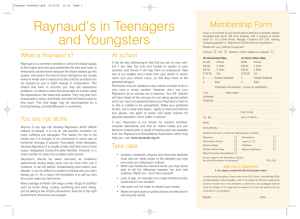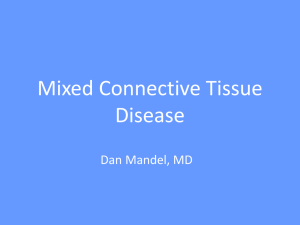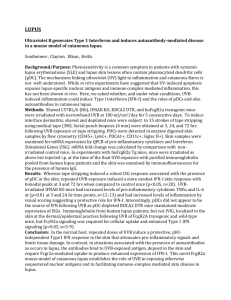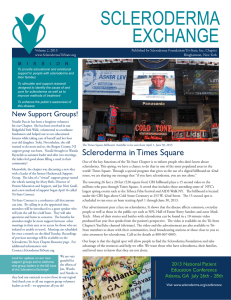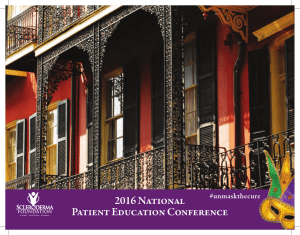What are connective tissue diseases?
advertisement
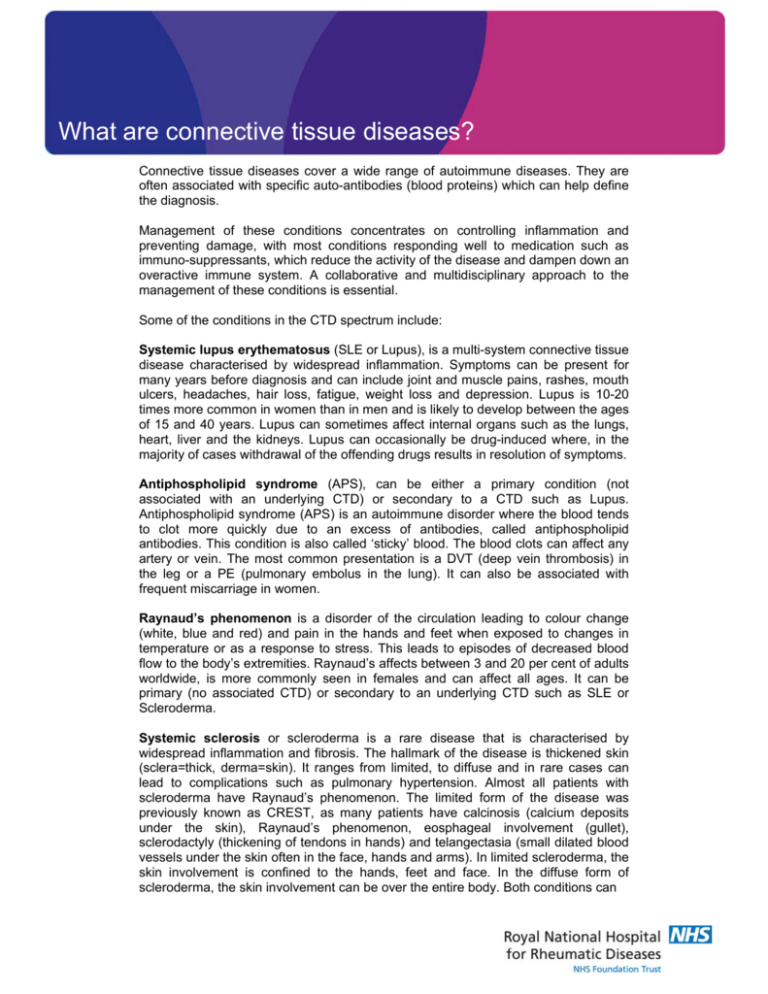
What are connective tissue diseases? Connective tissue diseases cover a wide range of autoimmune diseases. They are often associated with specific auto-antibodies (blood proteins) which can help define the diagnosis. Management of these conditions concentrates on controlling inflammation and preventing damage, with most conditions responding well to medication such as immuno-suppressants, which reduce the activity of the disease and dampen down an overactive immune system. A collaborative and multidisciplinary approach to the management of these conditions is essential. Some of the conditions in the CTD spectrum include: Systemic lupus erythematosus (SLE or Lupus), is a multi-system connective tissue disease characterised by widespread inflammation. Symptoms can be present for many years before diagnosis and can include joint and muscle pains, rashes, mouth ulcers, headaches, hair loss, fatigue, weight loss and depression. Lupus is 10-20 times more common in women than in men and is likely to develop between the ages of 15 and 40 years. Lupus can sometimes affect internal organs such as the lungs, heart, liver and the kidneys. Lupus can occasionally be drug-induced where, in the majority of cases withdrawal of the offending drugs results in resolution of symptoms. Antiphospholipid syndrome (APS), can be either a primary condition (not associated with an underlying CTD) or secondary to a CTD such as Lupus. Antiphospholipid syndrome (APS) is an autoimmune disorder where the blood tends to clot more quickly due to an excess of antibodies, called antiphospholipid antibodies. This condition is also called ‘sticky’ blood. The blood clots can affect any artery or vein. The most common presentation is a DVT (deep vein thrombosis) in the leg or a PE (pulmonary embolus in the lung). It can also be associated with frequent miscarriage in women. Raynaud’s phenomenon is a disorder of the circulation leading to colour change (white, blue and red) and pain in the hands and feet when exposed to changes in temperature or as a response to stress. This leads to episodes of decreased blood flow to the body’s extremities. Raynaud’s affects between 3 and 20 per cent of adults worldwide, is more commonly seen in females and can affect all ages. It can be primary (no associated CTD) or secondary to an underlying CTD such as SLE or Scleroderma. Systemic sclerosis or scleroderma is a rare disease that is characterised by widespread inflammation and fibrosis. The hallmark of the disease is thickened skin (sclera=thick, derma=skin). It ranges from limited, to diffuse and in rare cases can lead to complications such as pulmonary hypertension. Almost all patients with scleroderma have Raynaud’s phenomenon. The limited form of the disease was previously known as CREST, as many patients have calcinosis (calcium deposits under the skin), Raynaud’s phenomenon, eosphageal involvement (gullet), sclerodactyly (thickening of tendons in hands) and telangectasia (small dilated blood vessels under the skin often in the face, hands and arms). In limited scleroderma, the skin involvement is confined to the hands, feet and face. In the diffuse form of scleroderma, the skin involvement can be over the entire body. Both conditions can be associated with internal organ involvement, particularly of the lungs, heart and gut. Sjogren’s syndrome, is an autoimmune disorder that is associated with inflammation of the salivary glands in the mouth and the lacrimal glands in the eyes. Sjogren’s can be a primary condition, without any underlying connective tissue disease. It can be secondary to other CTDs, and is a common feature of other diseases and is seen in 10-20per cent of patients with longstanding rheumatoid arthritis and lupus. Common symptoms include dryness or ‘grittiness’ of the eyes, dry mouth, joint pains and fatigue. Inflammatory myopathies, eg polymyositis and dermatomyositis. Muscle weakness and pain, is characteristic of these two conditions. Polymoyositis causes widespread muscle inflammation usually of the thighs and upper arms. Dermatomyositis involves not only the muscles, but also the skin. The rash seen in dermatomyositis is often sun sensitive and involves the skin around the eyes, backs of the hands and the neck. Incidence increase with age and is highest between the ages of 40-65 years. Overlap syndromes with other autoimmune diseases occur in 15-20 per cent of cases. Primary vasculitides. This is a group of diseases that cause inflammation of linings of the blood vessels. This can lead to haemorrhage and damage to internal organs and skin. The size of the vessels involved determines the diagnosis. Conditions such as giant cell arteritis and Takayasu’s arteritis affect the large arteries. Polyarteritis nodosa (PAN) and microscopic polyangiitis affect the medium arteries. Wegener’s granulomatosis and Churg-Strauss vasculitis affect medium and small arteries. Other forms of vasculitis associated with other CTDs eg SLE, RA, henoch schonlein purpura, and leucocytoclastic vasculitis, affect the small arteries.
